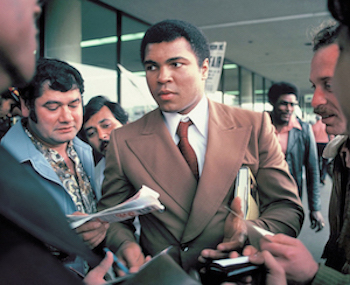Question
 Ali Outside the Ring
Ali Outside the Ring
When most people think of Muhammad Ali, they think of the (1) boxer who danced rings around his opponents and never seemed to tire. They think of a young man with an affinity for the spotlight, who delighted in playfully bragging about himself with (2) exclamations of "I'm the greatest!" and "Look how pretty I am!" It is true that Ali had a (3) appetite for attention and the public's adoration. But there was also another side to this unassailable champion. Ali might have seemed (4) in the ring, grandly shaking off punches and jabs as though he felt nothing at all, but outside of the ring, he felt plenty—and he let it show.
Simply put, Ali was deeply angry about incessant discrimination against African Americans. As he became more famous, he used his fame to speak out against the injustices he and many others were experiencing in the 1960s. Fans who were used to seeing a happy, carefree Ali were shocked to see this new angry, (5) Ali who spoke bitterly about racism.
At the time, black athletes were expected to remain (6) when it came to race relations, showing no emotion or concern about civil rights. But Ali felt that this kind of (7) by athletes would only make things worse for generations to come. He thought about his own (8): What would life be like for his children if things didn't change? Far from being a (9), Ali loved all people, regardless of race. He was irritated by sportswriters who tried to portray him as hating white people. "Hating people because of their color is wrong," he once said in an annoyed, (10) voice to a reporter who had suggested Ali didn't like white people. "And it doesn't matter which color does the hating. It's just plain wrong."
Photo Credit: Scott Woodham Photography/Shutterstock.com